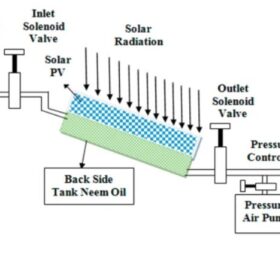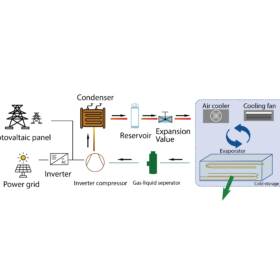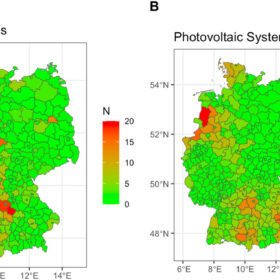Reducing PV module temperature with radiative cooling based on polymeric coatings
A Saudi research group has assessed how polymeric coatings, such as polyethylene terephthalate (PET) and polydimethylsiloxane (PDMS), could be used for radiative cooling in photovoltaic panels and has found that both materials could reduce the operating PV module temperature by between 1.15 C and 1.35 C.
Solar module cooling tech based on waste neem oil
An international research team has placed a neem oil tank on the back of solar modules for cooling purposes. The proposed solution reportedly improves PV panel performance by up to 17.8%.
Photovoltaics for cold storage
Researchers in China have developed a photovoltaic cold storage system that is reportedly able to improve refrigeration capacity and ice storage rate. The system is said to ensure a stable cooling system operation for the refrigeration needs of agricultural products.
SGC, SMO to deploy 100 MW of solar waste-to-energy in Australia
SGC and SMO say they plan to install 100 MW of solar waste-to-energy systems in Australia. They aim to deploy a total of 50 waste-to-energy units in the next three years, with plans to scale up to 1 GW in the future.
Vertical agrivoltaics for forage crops, animal grazing
US-based Sunstall has deployed a vertical agrivoltaic facility based on its racking solution in the United States. The system features 18 rows of 21 panels and has a total capacity of 170 kW.
BMZ Group releases lithium iron phosphate battery for residential PV
The German manufacturer said PV system owners can connect up to four units in parallel for a storage capacity of up to 106.8 kWh. The battery reportedly has a lifecycle of more than 6,000 cycles and comes with a 10-year warranty.
Livoltek releases all-in-one storage system for residential applications
Livoltek has developed an all-in-one storage system for residential applications, featuring a storage capacity of up to 25 kWh and compatibility with five different inverter models, as well as the option to integrate with electric-vehicle (EV) chargers.
K2 Systems launches mounting systems for facades
Germany’s K2 Systems has developed mounting systems that are specifically designed for facades, including walls made from masonry, concrete, sandwiched panels, trapezoidal metal sheets, and corrugated sheets.
Open-source software helps stakeholders make cost-effective renewable energy investments
Conceived by a group of scientists in Australia, the novel online tool can be modified for different regulatory environments. The program’s user interface asks for seven input files with a resolution of 30 minutes.
Legitimation, competition drive citizen-led PV initiatives in Germany
Scientists have analyzed what factors affect the emergence of solar associations and cooperatives in Germany. Applying the organizational ecology theory, they found a collective solar initiative in a given district may likely lead to creation of similar experiences in the same district.










